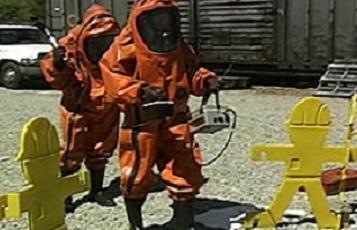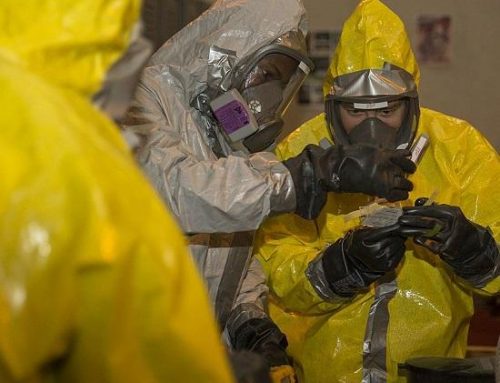Monitoring procedures and equipment are critical components of a successful Hazardous Waste Operations and Emergency Response (HAZWOPER) program. These tools and procedures help businesses identify and assess potential hazards and ensure the safety of workers exposed to hazardous substances or conditions on the job. In this article, we’ll provide an overview of monitoring procedures and equipment and offer some helpful tips for businesses looking to implement them.
What are Monitoring Procedures and Equipment?
Monitoring procedures are the methods and protocols used to identify and assess potential hazards in the workplace. These procedures may include air monitoring, water sampling, and soil testing, among others.
Monitoring equipment, on the other hand, refers to the tools and instruments used to collect data and samples for analysis as part of the monitoring process. This equipment may include air sampling pumps, pH meters, and water testing kits, among others.
Why are Monitoring Procedures and Equipment Important?
Monitoring procedures and equipment are important because they help businesses identify and assess potential hazards in the workplace and ensure the safety of workers. By regularly monitoring the air, water, soil, and other aspects of the work environment, businesses can detect any potential hazards and take steps to mitigate them before they become a problem.
In addition, monitoring procedures and equipment are often required by law or regulatory agencies, such as the Occupational Safety and Health Administration (OSHA), as a means of ensuring the safety of workers and the general public.
Tips for Implementing Monitoring Procedures and Equipment
Here are 10 tips to help your business implement effective monitoring procedures and equipment:
- Determine what needs to be monitored: Identify the potential hazards in your workplace and determine what needs to be monitored to assess those hazards.
- Choose the right equipment: Select the appropriate equipment for the specific monitoring needs of your business. This may require consulting with experts or testing different options to find the best fit.
- Train employees on how to use the equipment: Proper training is crucial to ensure that employees know how to use the monitoring equipment and follow the proper procedures properly.
- Calibrate and maintain the equipment: Regularly calibrate and maintain the equipment to ensure it is in good working condition and producing accurate results.
- Follow established protocols: Follow established protocols for conducting the monitoring procedures to ensure consistent and reliable results.
- Keep thorough records: Maintain thorough records of all monitoring activities, including the results of the procedures and any follow-up actions taken.
- Review and update the program as needed: Periodically review and update your monitoring program to ensure it is still effective and in compliance with any changes in relevant laws and regulations.
- Involve employees in the monitoring process: Involving employees in the monitoring process can help ensure their buy-in and support for the program.
- Consult with experts: If you are unsure of the best monitoring practices or equipment for your business, consider consulting with experts or regulatory agencies for guidance.
- Consider outsourcing: If your business lacks the expertise or resources to implement a monitoring program effectively, consider outsourcing the work to a qualified third party.
It’s worth noting that monitoring procedures and equipment are just part of a comprehensive HAZWOPER program. Other key elements of a successful HAZWOPER program include training, personal protective equipment, and emergency response planning. To ensure the safety of your workers and compliance with regulatory requirements, it’s important to have a well-rounded program that addresses all of these areas.
In addition, it’s important to regularly review and update your HAZWOPER program to ensure it is still effective and in compliance with any changes in laws or regulations. This may involve conducting regular safety audits or consulting with experts to identify areas that need improvement.
Overall, a strong HAZWOPER program is crucial for ensuring the safety of workers and the general public in businesses that deal with hazardous materials or conditions. By implementing effective monitoring procedures and equipment and regularly reviewing and updating your program, you can help protect the health and well-being of your employees and the community.
Conclusion
Monitoring procedures and equipment are important tools for ensuring the safety of workers and the general public in businesses that deal with hazardous substances or conditions. By following the tips outlined above, you can help your business implement an effective monitoring program that helps identify and mitigate potential hazards in the workplace.
Do you need HAZWOPER Online Training?
Try a free demonstration of HAZWOPER: Monitoring Procedures and Equipment
Excerpt from the outline for our course, HAZWOPER: Monitoring Procedures and Equipment
OUTLINE OF MAJOR PROGRAM POINTS
The following outline summarizes the major points of information presented in the program. The outline can be used to review the program before conducting a classroom session, as well as in preparing to lead a class discussion about the program.
- You’d better watch out… because you have an enemy.
- It has a thousand different names and no mercy.
- Your nemesis doesn’t know fear.
- It never sleeps.
- It is literally inhuman.
- It can injure or kill you with no remorse.
- Worst of all, you might not even know that you are under attack.
- Contamination from hazardous materials is one of the most significant dangers that you face while on the job.
- You know that contamination could make you severely ill… even kill you.
- But the danger doesn’t stop there.
- Once you are contaminated, you can expose others as well.
- Without meaning to, you can unknowingly spread hazardous materials to your:
- Coworkers.
- Family.
- Friends.
- Even pets.
- Contamination doesn’t always end with you, and if you don’t protect yourself… it won’t.
- To combat the dangers of contamination, the Occupational Health and Safety Administration (OSHA) has developed a broad range of regulations.
- Foremost among these is the “Hazardous Waste Operations And Emergency Response” standard… commonly known as HAZWOPER.
- HAZWOPER sets the guidelines for all hazardous materials activities, including:
- Storage.
- Handling.
- Disposal.
- One of the most important areas that it addresses is “monitoring”, which covers two broad activities:
- Detection.
- Surveillance.
- “Detection” determines what hazardous materials are present at a site. This includes:
- Airborne contaminants such as dust, gases and vapors.
- Pollutants in water or soil.
- Detecting airborne hazards is especially important, because the contaminants that you inhale are among the most dangerous.
- Many chemicals pass easily from the lungs into the bloodstream.
- The “surveillance” part of monitoring deals with keeping tabs on hazardous chemicals over time.
- The object is to ensure that your work site won’t have any unpleasant surprises in store for you later on down the line.
- As you can see, monitoring is crucial when you are dealing with hazardous materials. Without it:
- No one would be able to evaluate dangers to your health.
- You couldn’t determine when and where protection is necessary.
- The proper selection of PPE would be impossible.
- Some of the most hazardous materials can not be seen, smelled or felt.
- Monitoring for these chemicals requires the use of highly specialized tools.
- Exposure monitoring instruments come in two varieties:
- “Direct-reading instruments”, which provide instant information.
- “Sampling collection devices”, which store airborne contaminants in collection media for later analysis at a laboratory.
- Each type of equipment has its own strengths and weaknesses.
- Used together, they often complement one another.
- The main strength of direct-reading instruments is that they provide immediate feedback.
- That’s why they’re used to detect conditions that OSHA designates as IDLH (immediately dangerous to life and health).
- Direct-reading instruments do have weaknesses, though.
- Each one is sensitive to only a limited range of chemicals.
- There is no single direct-reading device that picks up every contaminant.










